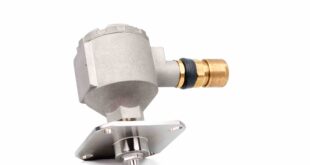LNG terminal are looking into new ways to supply ships with shore power, as opposed to using dual-fuel diesel engines (DFDEs) to offload their cargoes, in a bid to reduce noxious gas and particulate emissions.
These engines are capable of burning a range of fuels, from heavy fuel oil to boil-off-gas (BOG) from the LNG load.
Although the modern DFDEs have lower sulphur dioxide and finer particulate matter emissions compared to conventional diesel engines, vessels that use shore power at berth produce no localised emissions.
However, a few LNG terminals, such as the Dahej LNG berth on the west coast of India, operate with an open berth without a breakwater, making mooring and berthing difficult as the vessel is constantly moving.
The igus shore power energy chain for LNG terminals provides flexible tidal compensation, even for horizontal and rotational movements. For additional safety, this system has a 3-step release mechanism: step 1 – alarm; step 2 – power shut down; and step 3 – emergency disconnection.
To watch the video that shows how this safety system works, click HERE.
 Engineer News Network The ultimate online news and information resource for today’s engineer
Engineer News Network The ultimate online news and information resource for today’s engineer


